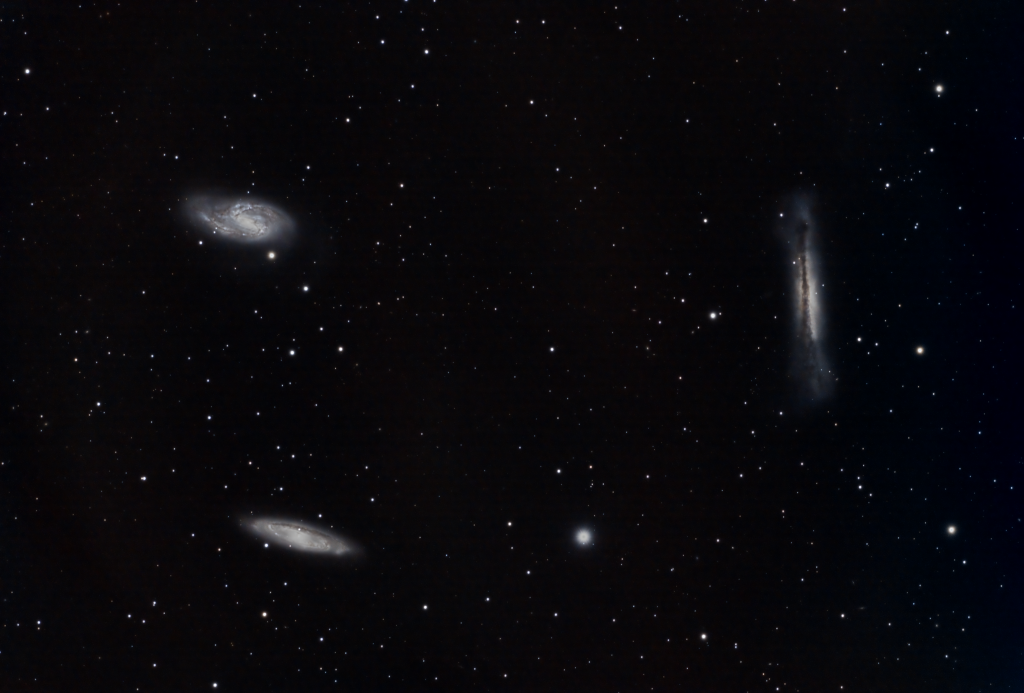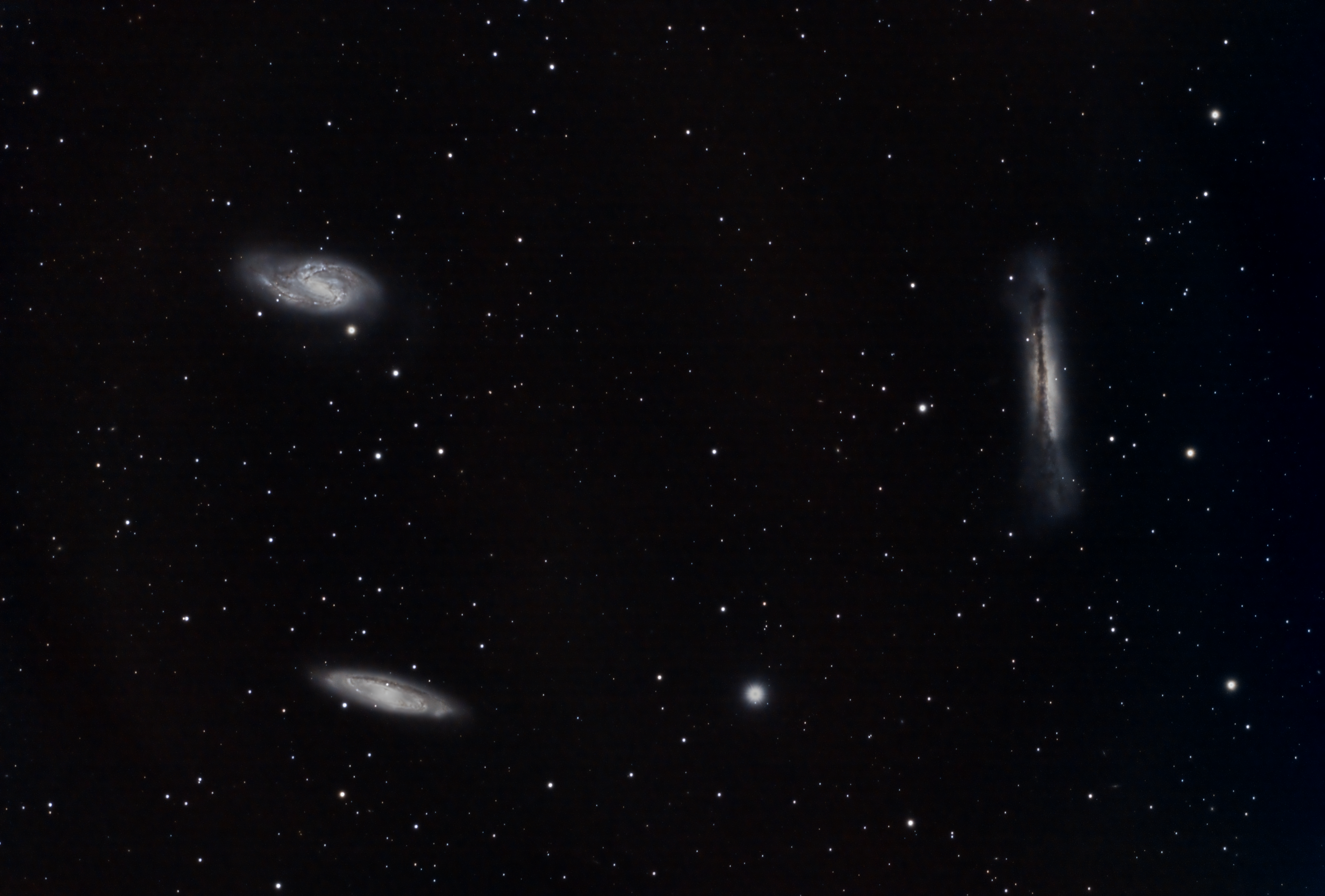
Similar Posts
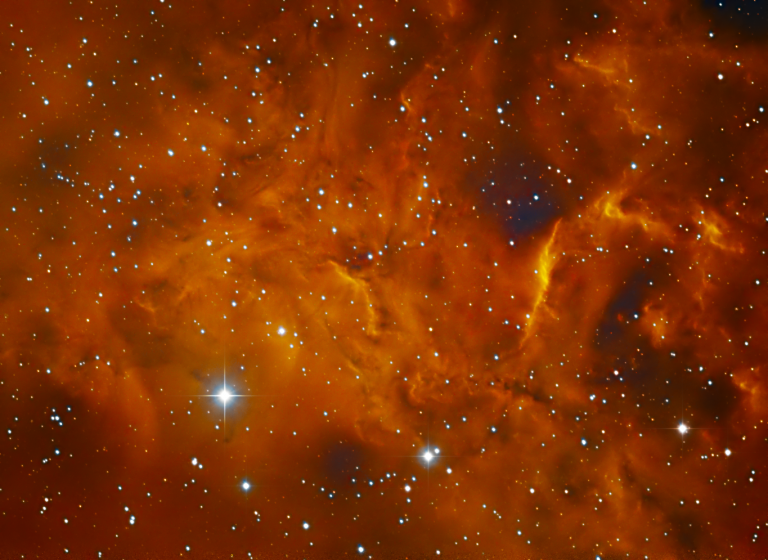
Flaming Star Nebula
Imaged in narrowband filters from my suburban driveway. This object lives up to its name with the right color mappings!
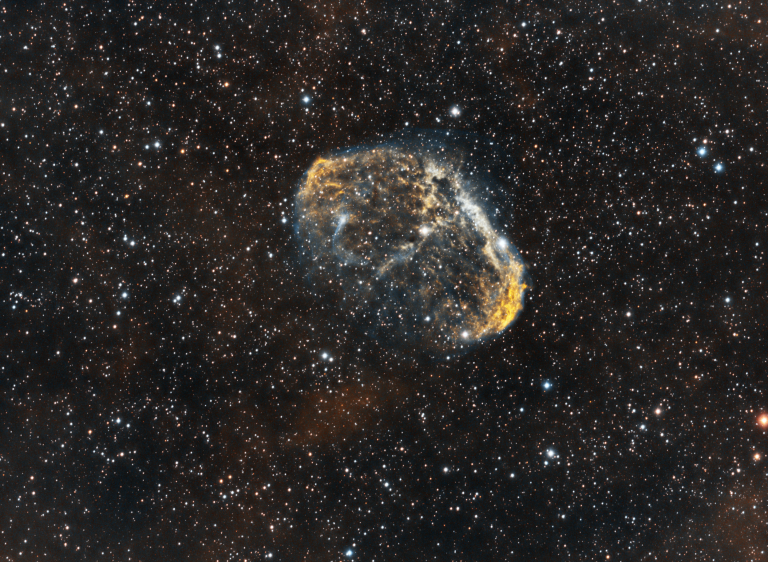
The Crescent Nebula
Like the Bubble Nebula, and Thor’s Helmet, this is formed by the fast stellar wind of the extremely hot star at its heart – which interacts in complex ways from the wind left over from when this star was a red giant. This is roughly 5,000 light-years away. These images were taken over the span…
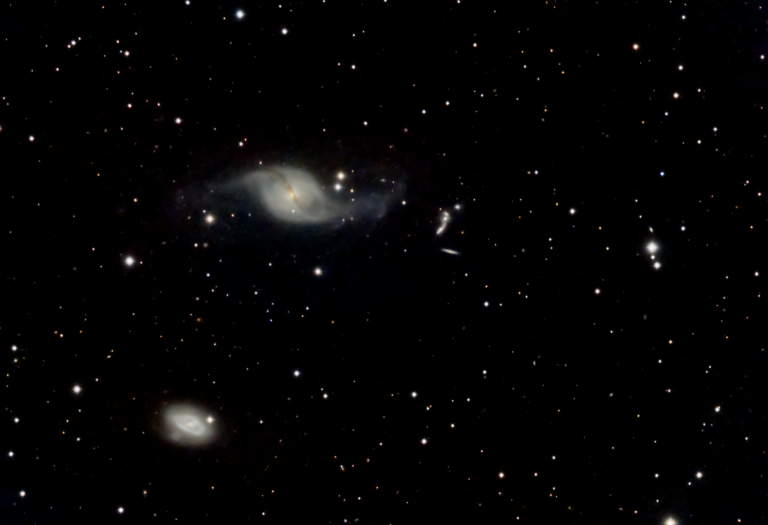
A really messed-up galaxy.
That twisted-up galaxy at the top is NGC 3718. We don’t actually know if it’s a spiral or a lenticular galaxy, because the galaxy below it, NGC 3729, appears to have warped it beyond recognition when it passed by it. Also look for the cluster of five more distant galaxies just to the right of…
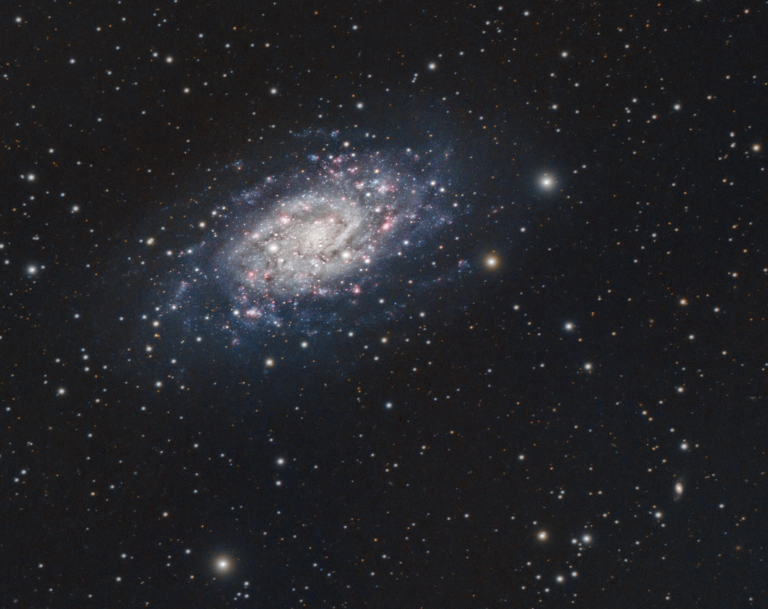
NGC2403: An obscure galaxy in an obscure constellation.
About 10 million light-years away within the constellation Camelopardalis lies NGC2403. It doesn’t get much love, but it was really an oversight in the famous Messier catalog that defines the most popular deep-sky objects. So let’s give it a little attention, and reflect on the fact that the light we’re seeing from this galaxy started…

Simplify and Automate your Astrophotography
If you’re serious about becoming a better astrophotographer, like with anything, it’s all about practice. With every image you produce, you’ll learn something that makes your next image a little better. But life has a habit of getting in the way. You’ve had a long, tiring day at work – do you really want to…
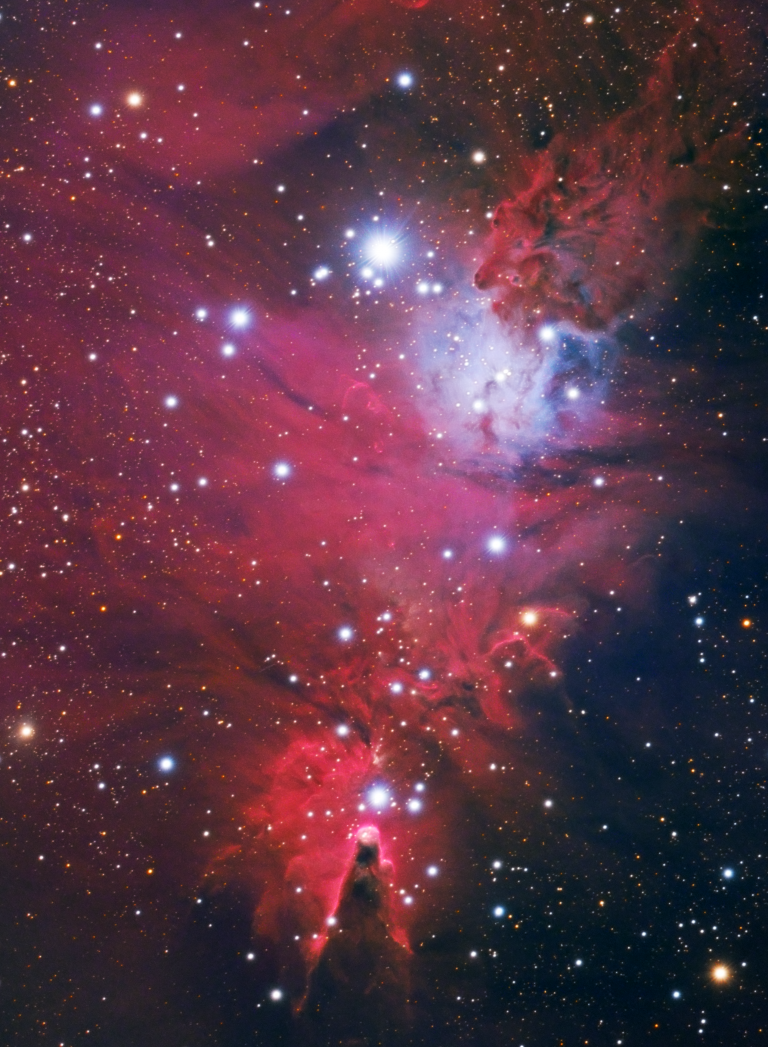
The Cone & Fox (revisited)
This is the Christmas Tree Cluster (turn the picture upside down and you might see it!) But the real focus here is the Cone Nebula at the bottom of the image, and the Fox Fur Nebula in the upper-right. Lots of red Hydrogen gas here being ionized by the young stars it formed. Also visible…

